Understanding Hong Kong's Challenges is Hard!
![]()
After many years, thirteen to be precise, the Nomads decided to return to Asia. Back in 2006, we had visited Hong Kong for a very short stay, and now decided that this was a city we needed to explore in more depth!
So, we flew from Phoenix to Los Angeles and on to Hong Kong, arriving in the early morning, now two days later (somewhere over the Pacific Ocean we lost a day!) After clearing immigration and collecting our wheely bags, we had three tasks to do - to visit an ATM for Hong Kong dollars, to buy a sim card for local phone service, and to buy an Octopus Card to ride public transit. After accomplishing these tasks, we boarded an Airport Express bus to ride into Kowloon.
Arriving at our hotel, we discovered that our room would not be ready until that afternoon. What to do? We managed to find places to hang out and eat a nice meal, but were feeling more and more sleepy. It was great to finally check into our comfortable room and nap a bit. Jet Lag - no way!
A Short History of Hong Kong
We began to explore Hong Kong with a visit to the History Museum to discover that the British set their sights on Hong Kong Island as a trading center and planted a flag there in 1841. The British had fallen in love with tea and China was happy to trade tea for silver. But the British had another plan - tea for opium! Poppies grew profusely in British India, making opium a commodity product. At first, this went well until China began to have an opium crisis! Before long, the first Opium War began, the British won, and took possession of Hong Kong Island in 1843. Then another war broke out and ended with not only Hong Kong Island but also Kowloon Peninsula and Stonecutters Island as British possessions in 1856. Finally, in 1898, the Chinese leased the New Territories to the British for 99 years - an eternity it seemed at the time!
As a British Crown Colony, an orderly administrative system was established but then, on December 8, 1941, the Japanese bombed Kai Tak Airport and surged down from the north to begin the three and a half year occupation of repression and brutality. That ended in 1945 with Japan's surrender following the bombing of Hiroshima and Nagasaki. Then, the population surged as civil war (1945 - 49) in Mainland China drove people from their homes to comparative safety in Hong Kong. As Hong Kong struggled to provide housing and infrastructure to cope with this growing population, the modern metropolis began to emerge.
We Start to Explore
With this story in mind, we began to explore, using our feet, the Star Ferries to cross Victoria Harbour to Hong Kong Island, the historic double decker trams (ding ding), buses, and the MTR (Mass Transit Railway) to explore farther afield. The transit system is economical, especially for seniors, comprehensive with routes serving every nook and corner of the Island, and frequent with service running early and late.

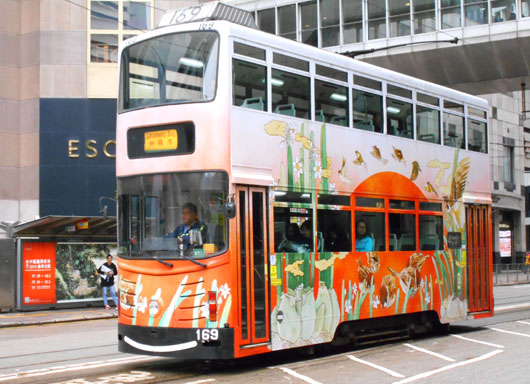
One challenge we faced immediately was finding food. Chinese food, Hong Kong style, is not very similar to American Chinese food and veggies are difficult to find. We soon found we could resort to western hotel restaurants, Pizza Hut, Middle Eastern, and even Indian cuisine.
After the first week in Kowloon, we moved to another hotel in the Sai Ying Pun district of Hong Kong Island, west of Central. This turned out to be a good move because it served a scrumptious breakfast and was in a more residential area with schools and the University of Hong Kong campus, vast numbers of shops and cafes, including some offering western food, and a lovely harbourside park.
As we explored, we came to realize that the Hong Kong of today is composed mainly of Hong Kong Island to the south, the Kowloon Peninsula and New Territories to the north, and Lantau Island to the west. Each has a narrow coastal margin with steep green mountains rising behind resulting in a very scenic location, but with very little flat space suitable for development. The famous skyline of unique highrise architecture clings to the north shore of Hong Kong Island while directly across Victoria Harbour, Kowloon lies to the north with its share of architectural marvels.
Hence, the city has needed to grow 'up' to provide housing as the population grew, especially since WWII. Many housing estates are very tall - 30 floors or more. With land at a premium, these towers have a comparatively small foot print, so they are tall and slender while others are broad "wall-effect" expanses - all quite eye-catching to us. Consequently, population density is amazing - 6,300 people per square kilometer. The massive highrise housing estates are surrounded by shops and traditional markets selling fresh fruits and veggies, meat and fish, and cooked food. Parks and "sit-out areas", schools and playgrounds, and temples to provide walkable urban neighborhoods for everyone.
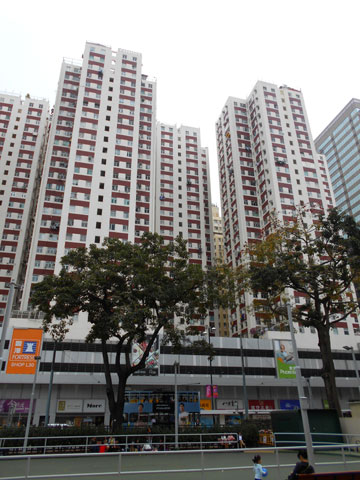
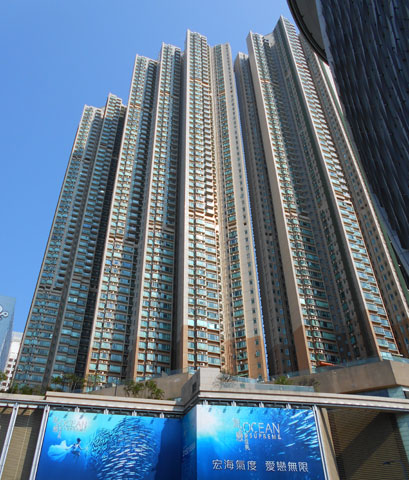
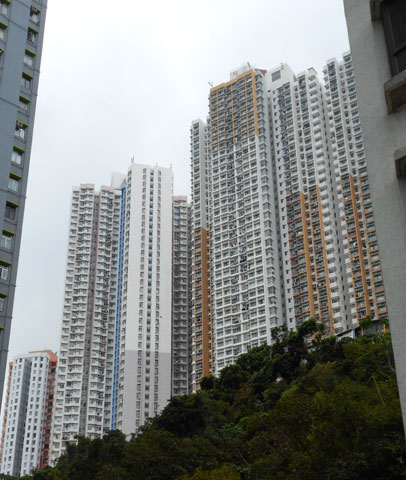
More Recent History
During the modern era, following the end of the Chinese Civil War and the Communist Revolution in 1949, the capitalist Hong Kong economy thrived, land values escalated, the population grew, and inequality expanded. The wealthy live well while the workers struggle to afford even modest living space. In the 1960s, Hong Kong began to develop New Towns in the New Territories. These master planned communities provided desirable homes for thousands of people surrounded by all the shops, markets and malls, schools, libraries and often employment well served by the transit system for easy commuting.
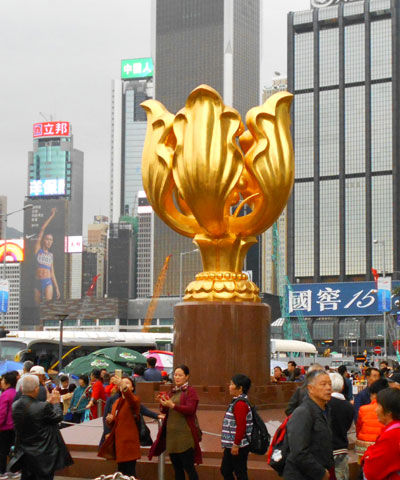
As the end of the 99 year lease approached, negotiations between the Peoples' Republic of China and Great Britain began. An agreement was reached to return Hong Kong to the Chinese as a 'Special Administrative Region' and the concept of "One China, Two Systems" was born on July 1, 1997. There is much to be told about this unique situation but we'll leave that to another story! In the meantime many visitors, mostly Chinese, come to the memorial commenerating the transfer.
Perhaps the most visible impact, though, is the influx of tourists, especially wealthy ones, who come to SHOP! We learned that over 76% of the total tourist arrivals are from Mainland China, along with large numbers of Taiwanese, Japanese and Korean visitors, visit as well to throng the amazing malls to purchase goods of every imaginable description. We strolled through Pacific Place in Admiralty on Hong Kong Island and Harbour City on Canton Road in Kowloon, becoming boggled by the vast glitzy and ostentatious array of STUFF, an astounding display of over the top consumerism.
Highlights of our Explorations
We searched for fun activities to accompany our urban observations including a wild bus ride up to Victoria Peak, another bus ride around to the south side of Hong Kong Island to Aberdeen, an exploration of the new West Kowloon Terminus of the China High Speed Rail Line, and the even newer Chinese Opera Theatre, visits to Buddhist Temples and a mosque, a Flower Show, and cruises on Victoria Harbour.
Up to Victoria Peak
We chose to take a bus because the funicular was packed with long queues. The ride offered spectacular views as the road twisted and turned upward. At the top, we were amazed to find a rather major mall more focused on shopping than marveling at the views. After taking a few photos, we rode the bus back down.
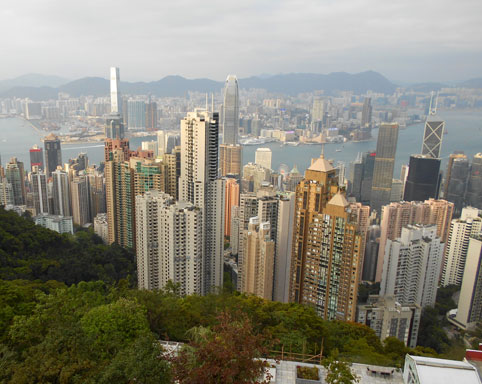
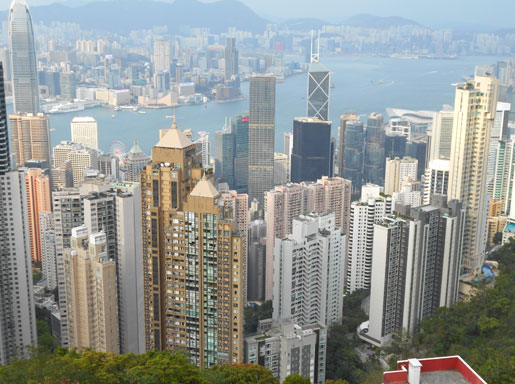
China High Speed Rail Comes to Hong Kong!
Just as we arrived, high speed rail arrived, too. We visited the very grand, large and new West Kowloon Terminus where one may board a modern train for a fast ride to Shanghai or Bejing.
Aberdeen on Hong Kong Island's south shore
Another bus took us around to the south side of Hong Kong Island to visit Aberdeen. This was the site of the original British settlement, and is a safe harbor for fishing boats called junks. Today, the MTR serves Aberdeen and housing estates have proliferated spectacularly, creating a New Town with many highrises along with a lovely waterside park for walks.
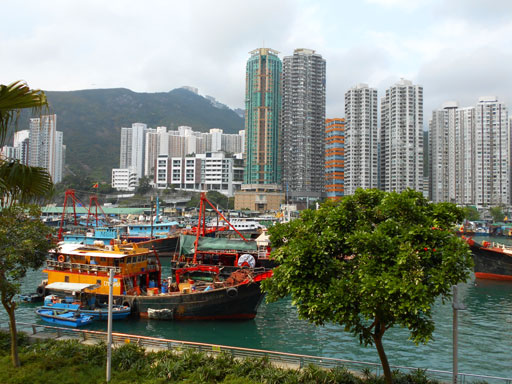
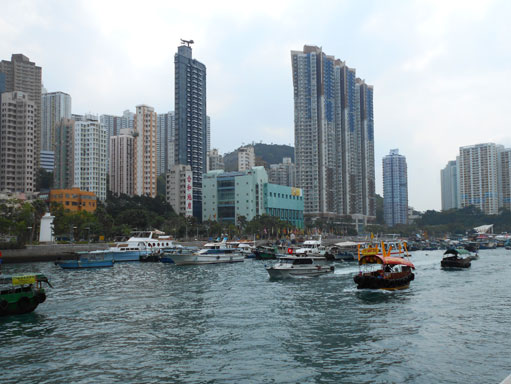
Chinese Opera Theatre
This theatre was just completed and the opening performances were scheduled for this summer. Hong Kong has made a powerful commitment to Chinese culture and this sensational theatre is proof! The architecture is astounding!
Temples, Mosques and Churches
The spiritual architecture - Buddhist Temples, Mosques and Christian Churches - contribute to Hong Kong's architectural mosaic and enable Hong Kong People to worship as they choose. We visited the Man Mo Buddhist Temple, a tribute to the God of Literature and the God of War, offering clouds of incense from coils hanging from the ceiling and altars with small images of the panteon of gods. In the Kowloon Masjid (mosque) we were welcomed with a brief tour and a bit of history.
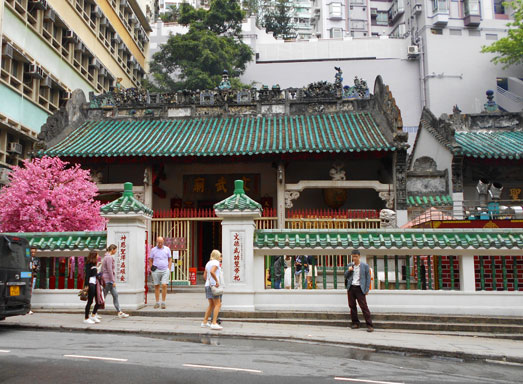
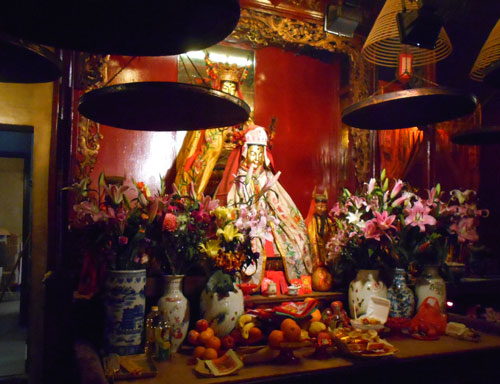
Criuses on Victoria Harbour
The venerable Star Ferries offer rides across the harbour and also longer cruises - a great way to view Hong Kong's architecture from the water. Some pictures are included in our Flickr show reached by the link below.
Hong Kong Flower Show
Serendipitously, we arrived in time to the annual flower show in Victoria Park. We joined many Hong Kong People to ooh and aah at the displays of dazzling blooms and flower sculptures. It was an experience to bring smiles to everyone!
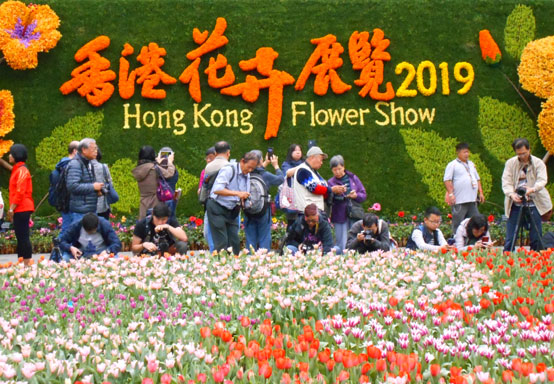
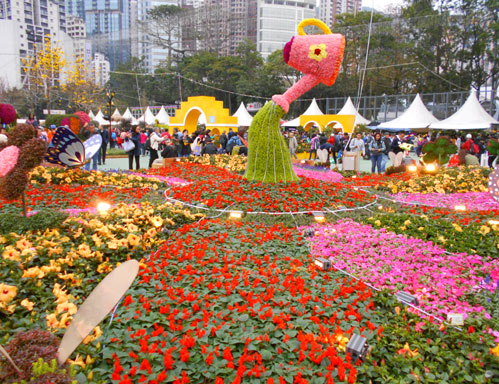
Conclusions
During our three week stay, we observed Hong Kong life and culture and came to realize that the relationship with Mainland China offers major challenges. "One China - Two Systems" has been a difficult pledge for Mainland China to keep and their pressures for Hong Kong People to live with. Just as we were leaving, there were massive demonstrations as people surged into the streets to protest a new extradition law proposed by the Chinese government and agreed to by the mainland dominated Hong Kong government.
We also learned that Hong Kong struggles to provide adequate housing for all. Some lower income people live in tiny cubical cells while they wait for proper housing. The ever higher and denser residential estates must have limits!
So, Hong Kong people face a complex mosaic of challenges as they march into the future.
We will continue to follow their progress.
To view more of what we experienced in Hong Kong, Click here to view our Flickr photo album.
Click here to return to 'Spring 2019 in Hong Kong and Singapore' page
Click here to return to Our Searching the World page
![]()